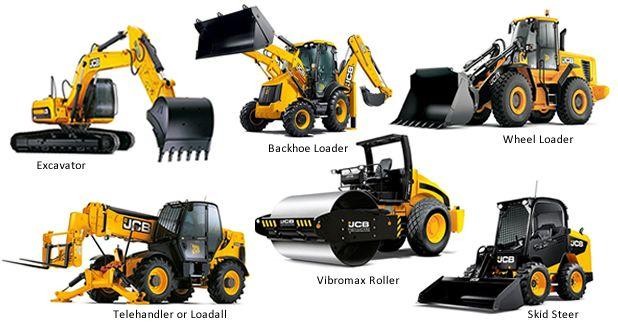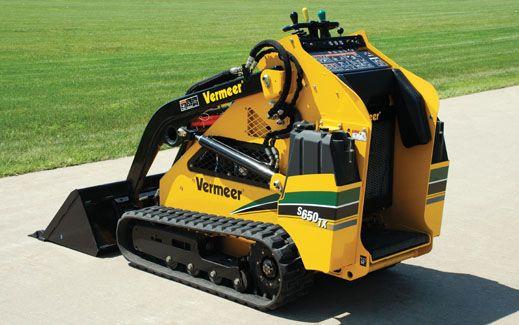Dozer Rental: Powerful Earthmoving Tools for Your Construction Demands
Dozer Rental: Powerful Earthmoving Tools for Your Construction Demands
Blog Article
Optimize Your Spending Plan by Comprehending the Expenses Connected With Construction Equipment Services
Recognizing the complete range of prices associated with building and construction equipment leasings is essential for maximizing your budget. While the first rental charge may appear straightforward, countless extra expenditures-- such as transportation, gas surcharges, and upkeep-- can rapidly accumulate, impacting your financial preparation. Furthermore, knowing different costs and the complexities of rental arrangements can help stay clear of unexpected monetary burdens. What techniques can be utilized to properly manage these expenses and make certain a more efficient rental experience?
Summary of Rental Costs
When thinking about construction tools rentals, comprehending the associated expenses is paramount for efficient budgeting and project planning. Rental prices can vary dramatically based on a number of factors, including tools type, period of rental, and place. The first rental fee usually reflects the devices's market need and its connected functional capabilities, influencing the total expense.
Along with the base rental rate, supplementary costs may occur, such as transport costs, fuel surcharges, and maintenance fees. It is important to represent these added expenditures to accurately evaluate the overall expense of leasing tools. Furthermore, the rental period can affect prices; longer leasings might get affordable prices, while short-term rentals might incur higher daily fees.

Break Down of Rental Rates
An extensive understanding of rental rates is vital for specialists and job managers aiming to optimize their spending plans. Rental rates for construction tools commonly include several parts, including base rates, time-based fees, and use charges.
Base rates are the core costs connected with the rental of the tools, usually identified by the type and size of the equipment. These rates can differ considerably, influenced by variables such as devices demand, schedule, and regional market fads. Time-based fees, which might be daily, weekly, or monthly, offer to accommodate various project timelines and rental periods.
Additionally, rental prices may consist of usage costs, which are suitable when equipment is used beyond a defined threshold, making sure that the rental company can make up wear and tear. Seasonal need fluctuations can additionally affect rental prices, with peak construction seasons typically regulating greater prices.
In addition, understanding the rental firm's policies relating to upkeep and insurance coverage can offer more insight right into the overall expense framework. By analyzing these elements, specialists can make informed decisions, making certain the choice of rental tools lines up with both task requirements and spending plan constraints.
Additional Charges to Take Into Consideration
Understanding the ins and outs of added fees is important for service providers to handle their overall rental costs successfully. Past the basic rental prices, various supplemental fees can considerably affect the total price of tools service. These costs usually include distribution and pick-up fees, which can vary based on range and logistics associated with moving the tools to and from the task site.
Moreover, some rental firms might impose gas surcharges if the equipment is returned with much less gas than when leased. It is also vital to understand possible cleaning fees, specifically for customized tools that needs comprehensive upkeep after usage.

Thoroughly assessing the rental contract and making clear these extra fees ahead of time can help service providers prevent unexpected expenses and ensure that budget plans remain intact throughout the task lifecycle.
Maintenance and Repair Costs
Normal repair and maintenance expenses are commonly overlooked aspects that can significantly influence the total cost of building tools rentals. When leasing tools, it is essential to take into consideration not just the rental fees however additionally the potential expenses related to maintaining the machinery in ideal operating problem.
Numerous rental business consist of standard maintenance as part of the rental contract; nonetheless, extra unforeseen malfunctions or considerable repairs can lead to added expenses. It's necessary to assess the rental agreement carefully to understand what maintenance services are covered and what responsibilities fall on the renter.
Furthermore, equipment that is not well-maintained can result in inefficiencies on duty site, potentially causing delays and increasing task prices. To minimize these threats, it is a good idea to carry out routine evaluations and maintain open communication with the rental provider regarding any kind of concerns that develop during use.
Insurance and Responsibility Prices
Insurance policy and obligation costs are crucial components that can dramatically influence the general expense of building and construction tools leasings (scissor lift rental). These costs ensure that both the rental firm and the client are shielded from prospective financial losses emerging from mishaps, damage, or burglary during the rental duration

In addition, clients ought to understand any deductibles or exemptions in the insurance plan, as these can impact possible out-of-pocket expenses. Comprehending the conditions of any insurance protection is vital to avoid unforeseen prices. Ultimately, budgeting for insurance coverage and responsibility expenditures can help guarantee a smoother rental experience and shield versus financial dangers related to building and construction projects.
Conclusion
In final thought, a thorough understanding of the prices associated with construction devices leasings is necessary for reliable spending plan management. By evaluating rental rates, extra charges, maintenance more costs, and insurance coverage needs, companies and people can minimize unexpected expenditures. This critical strategy not just enhances cost-effectiveness however also guarantees that jobs advance efficiently and effectively. Eventually, notified decision-making relating to devices leasings contributes to the overall success of construction undertakings.
Rental prices can differ substantially based on several elements, consisting of tools kind, period of rental, and location (boom lift rental). The rental period can affect pricing; longer leasings may certify for discounted rates, while short-term rentals could incur greater day-to-day fees
By performing complete research and Your Domain Name engaging with trusted rental firms, professionals can properly navigate the intricacies of rental rates, ultimately optimizing their economic resources.
Beyond the typical rental rates, different supplementary fees can dramatically impact the overall expense of tools rental. Rental business commonly provide obligation insurance policy that covers injuries to 3rd parties or damage to building, while equipment damage insurance can cover the expense of repair services or substitute if the rented devices is damaged.
Report this page